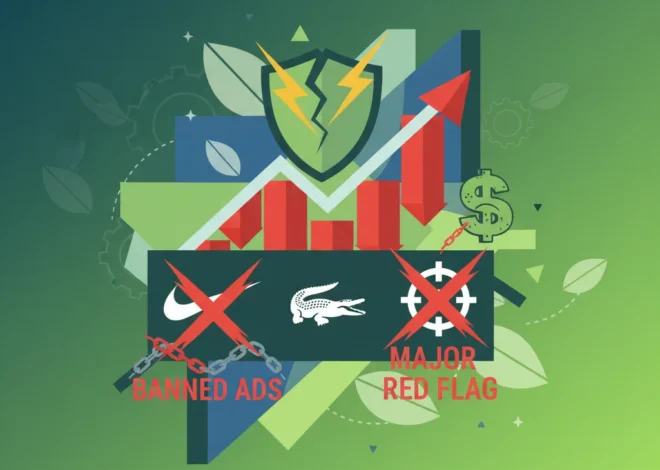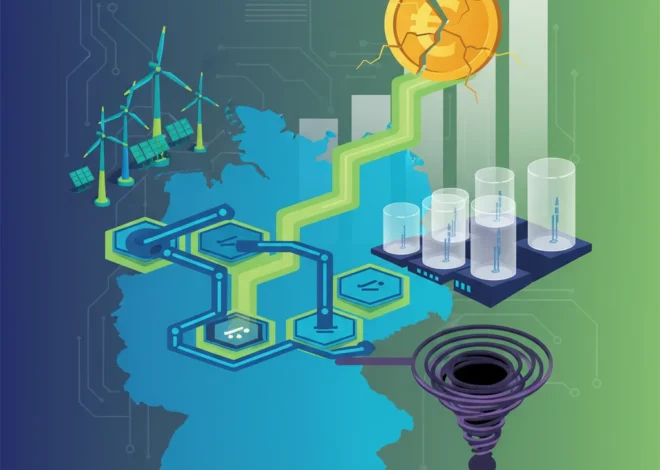
Green Steel’s Billion-Dollar Gamble: Can H2GS Forge a Future or Will It Melt Under Financial Pressure?
The Dawn of a New Industrial Revolution or a Costly Mirage?
In the world of heavy industry, steel is king. It’s the backbone of our cities, our infrastructure, and our economy. But this strength comes at a steep environmental cost, with traditional steelmaking responsible for roughly 8% of global CO2 emissions. Enter the tantalizing promise of “green steel”—a revolutionary process that could build our future without burning our planet. At the forefront of this movement is H2 Green Steel (H2GS), a Swedish start-up with an audacious goal: to produce millions of tonnes of near-zero carbon steel using green hydrogen.
It’s a vision that has captured the imagination of investors and policymakers alike, representing a cornerstone of Europe’s ambitious Green Deal. Yet, behind the gleaming promise of a sustainable future, a formidable crisis is brewing. H2GS is scrambling to close a staggering funding gap of over €5 billion, and the clock is ticking. As investors grow nervous, they can’t help but look at the cautionary tale of H2GS’s sister company, the battery giant Northvolt, whose recent financial stumbles have sent a chill through the world of green tech investing. This isn’t just about one company’s balance sheet; it’s a high-stakes test of whether the modern financial system is truly ready to bankroll the green industrial revolution.
The Anatomy of a €5 Billion Challenge
To understand the scale of the challenge, we must first appreciate the scale of the ambition. H2GS isn’t building a small pilot plant; it’s constructing a massive industrial complex in Boden, northern Sweden, designed to produce 5 million tonnes of green steel annually by 2030. This process replaces coal-belching blast furnaces with electrolyzers that use renewable electricity to create hydrogen, which in turn reduces iron ore into sponge iron. It’s a marvel of clean engineering, but one that requires an astronomical amount of upfront capital.
The company is currently in a desperate race to finalize one of the largest project financing packages in European history. The funding puzzle is complex, requiring a delicate balance of debt and equity from a wide array of public and private sources.
Below is a breakdown of the capital structure H2GS is trying to assemble:
| Funding Component | Amount Required | Key Players & Status |
|---|---|---|
| Senior Debt | ~€3.5 Billion | Led by a consortium of commercial banks and export credit agencies. The European Investment Bank (EIB) is a crucial potential cornerstone lender. |
| Equity Investment | ~€1.5 Billion | Seeking capital from existing and new investors, including Altor, GIC, Just Climate, and Hy24. This is the second major equity round. |
| Total Funding Goal | >€5 Billion | Deadline is imminent, creating significant pressure on management and existing backers. |
Securing this financing is a monumental task in today’s economic climate. Rising interest rates have made debt more expensive, and volatile stock market performance has made investors more risk-averse. The core issue is that projects like H2GS represent a new frontier in investing, blending venture capital-style risk with infrastructure-level capital expenditure. Traditional banking and finance models are not always equipped to handle this hybrid, creating a chasm known as the “valley of death” for industrial start-ups.
Corporate Turmoil, Global Bets, and a Founder's Fall: Decoding the Week's Biggest Financial Dramas
The nervousness around H2GS isn’t just about one deal; it’s a sign that the financial plumbing of our economy is groaning under the weight of these new demands. Success here would require a new paradigm of blended finance, where public institutions like the EIB de-risk projects enough to bring private capital off the sidelines. If H2GS fails, it won’t be for a lack of vision or technology, but because our financial technology and investment frameworks haven’t evolved as fast as our climate ambitions. This is the critical, behind-the-scenes story that will determine the pace of decarbonization.
The Spectre of Northvolt: A Green Tech Sibling’s Warning
Compounding the pressure on H2GS is the recent performance of its spiritual predecessor, Northvolt. Also a Swedish-born green-tech champion, Northvolt successfully raised tens of billions to become Europe’s premier battery manufacturer. It was the poster child for the continent’s industrial strategy. However, the shine has recently worn off.
Northvolt’s shares, which trade on the private market, have plummeted by as much as 20% in recent months. This downturn reflects broader concerns about production delays, cost overruns, and the immense difficulty of scaling complex manufacturing operations. For investors looking at H2GS, the parallel is impossible to ignore. Both are Swedish, both are pioneers in capital-intensive green industries, and both share some of the same early investors. The fear is that the challenges that plagued Northvolt are not unique but systemic to these mega-projects.
This “pattern recognition” by the investment community is a powerful force in financial markets. When a leading company in a new sector stumbles, it casts a long shadow over its peers. The logic is simple: if a well-funded, high-profile company like Northvolt is struggling, what hidden risks might be lurking within H2GS? This sentiment shift makes the final leg of H2GS’s fundraising marathon exponentially more difficult. Creditors demand more stringent terms, and equity investors demand a lower valuation, creating a vicious cycle that can jeopardize the entire project.
Netanyahu's High-Stakes Gamble: Decoding the Economic Fallout for Israel and Global Investors
Forging a Path Forward: Can the Deal Be Saved?
Despite the immense pressure, the situation is not hopeless. H2GS has several factors working in its favor that could help it navigate these treacherous financial waters and avoid Northvolt’s fate.
First, the strategic importance of green steel cannot be overstated. Steel is a foundational industry, and creating a domestic, low-carbon supply chain is a matter of economic and national security for Europe. This provides a powerful incentive for public institutions like the European Investment Bank to step in. The EIB’s participation is seen as a critical stamp of approval that can unlock vast pools of private capital from commercial banks and institutional investors.
Second, H2GS has been proactive in securing offtake agreements, pre-selling a significant portion of its future production to major customers like car manufacturers and appliance makers. These binding contracts provide lenders with a degree of revenue certainty, a crucial element in de-risking the project’s economics. They demonstrate tangible market demand for a premium, green product, transforming a speculative venture into a more predictable business case.
Ultimately, the success of H2GS will hinge on the resolve of its core coalition of investors and the strategic support of public finance. The coming weeks will be a test of nerve for everyone involved. A successful close would send a powerful signal across the global economy: that Europe is serious about its green industrial strategy and that the financial world can, in fact, rise to the challenge of funding it. A failure would be a devastating blow, not just for one company, but for the credibility of an entire continent’s climate ambitions.
The story of H2 Green Steel is more than a corporate finance drama; it’s a live-fire exercise in the economics of decarbonization. As investors weigh the risks and rewards, they are not just making a decision about one steel plant. They are placing a bet on the future of industry, the resilience of our financial systems, and our collective ability to build a sustainable and prosperous world.
Beyond the Missing Dress: Decoding the Economic Fallout of America's Shipping Crisis


